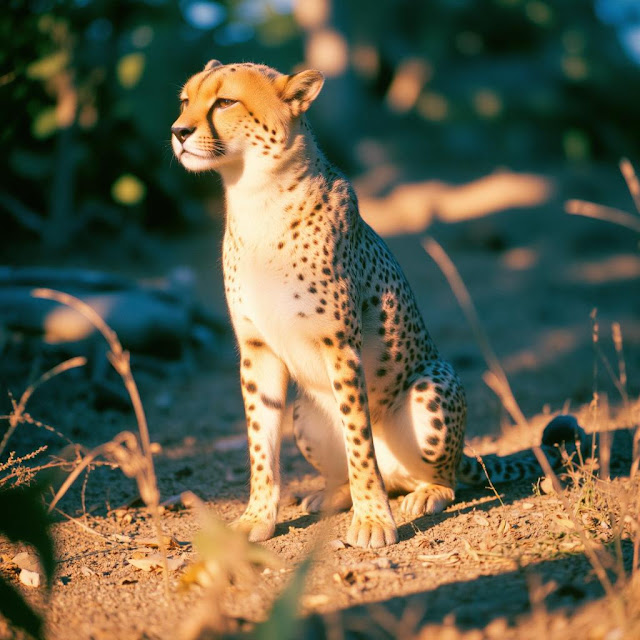The Science Behind Cheetahs' Unmatched Speed
INTRO:
According to my research, scientists like my friend Osato and many others have been perplexed for years as to why medium-sized animals, like cheetahs,are typically the quickest runners on land.Speed follows a distinct pattern from other biological attributes like strength, lifespan, and brain size, which generally grow with an animal's size.Dr. Osato also questions why the tiniest creatures,like ants,and larger animals,like elephants, are not the fastest.Rather,species in the middle range,such as cheetahs,are the dominant force in speed.I assume that some of you reading this are thinking the same thing.You will be happy to learn that you are not the only one who thinks this way since Imperial College London researchers have investigated this mystery in partnership with Harvard University and other organizations.The speed at which muscles contract and the distance that muscles can shorten during a stride are the two main muscle restrictions that limit an animal's maximum speed, according to their results.So sit back and unwind for more discoveries on this topic.
Outlines:
- The ‘Sweet Spot’ for Speed
- Testing the Theory
- Implications for Evolution and Robotics
- Conclusion
The ‘Sweet Spot’ for Speed:
According to what I study during my personal research about this topic,I found out that animals weighing around 50 kilograms whch is roughly the size of a cheetah can occupy an optimal range where these two muscle constraints align.I then discover why this is able to explains why cheetahs can reach staggering speeds of up to 65 miles per hour.For smaller animals,my friend Dr Osato told me that the limitation is their rapid muscle contractions. Their muscles can generate high forces relative to their weight, but their stride length is too short to achieve extreme speeds. It’s similar to cycling downhill in a low gear which we all know can move faster,but not enough distance covered per rotation.On the other hand,if you take a good look at larger animals,they face a different challenge.Their muscles are constrained by how far they can contract,from common sense which means they cannot generate enough force relative to their body weight.Dr Osato also told me that Running for these animals is akin to pedaling uphill in a high gear,which can be difficult and energy-intensive.This is why massive creatures like elephants and rhinos are relatively slow, and this is quite a revelation for me and you I guess.
Testing the Theory:
I also learned some thing of great importance,which scientist employ to verify their model,researchers analyzed data from over 400 species,ranging from tiny mites to six-ton elephants. Their findings confirmed that land speed closely aligns with body size, supporting their theory that medium-sized animals are naturally optimized for speed.I was so thrilled on how Interestingly,the study also explains why large reptiles, such as crocodiles and lizards,tend to be slower than their mammalian counterparts. Reptiles generally have a lower percentage of limb muscle mass relative to their body weight, meaning they hit their speed limitations at a much smaller size I guess you are starting to get a clear picture of what i am saying now.
Implications for Evolution and Robotics:
One important thing no one can dispute is that the findings offer valuable insights into evolutionary biology,particularly how muscle function influences animal movement.and I can tell you for free that it also dida fantastic job by the way it suggest that extinct species,like the massive Patagotitan dinosaur,may have had unique muscular structures that enabled movement despite their enormous size.Scientists like my friend Dr Osato caution against assuming that today’s large animals have the same muscle anatomy as prehistoric giants.Additionally, the research has exciting implications for robotics. Understanding the biomechanics of speed could lead to innovations in robotic designs that mimic the agility and endurance of the fastest animals and this is so cool.
Conclusion:
I will want you all to know that this research is focused on a broader and bigger approach,which is to say,while this study focused on land animals,researchers like my Dr Osato are now looking to apply their model to creatures that swim and fly.The same physical principles could explain how birds,fish,and even human athletes push their limits.Dr Osato also told me that by unlocking the secrets behind muscle performance, scientists hope to gain deeper insights into both the natural world and the future of bio-inspired engineering and I will say that the future looks brights.




nice one
ReplyDelete